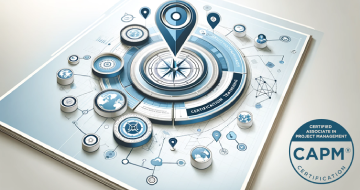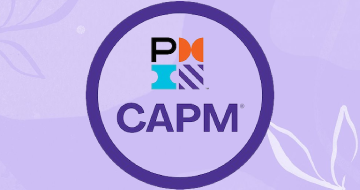IIRF Online > Business > Project Management > PMI Certified Associate in Project Management (CAPM) > The Ultimate Project Management PMP Prep Course (35 PDUs)
The Ultimate Project Management PMP Prep Course (35 PDUs) by Udemy
Master Project Management and Agile for your PMP or CAPM certification, with the PMBOK, Agile Practice Guide and more!
Course Highlights
- 500 of the best Practice Questions, designed specifically to help you learn and pass your PMP or CAPM.
- Gain 35 Contact Hours / PDUs to sit your PMP exam, CAPM exam, or renew your Certification.
- The latest information from the PMBOK Guide Seventh Edition, Agile Practice Guide and Process Groups Practice Guide.
- Learn to start and manage projects, from start to finish.
- Become a better Leader, Manager and team member, make change and deliver value more easily!
- Your very own Certificate of Completion, proving your 35 Contact Hours / PDUs.
Skills you will learn!
Curriculum
6 Topics
Introduction - Why Learn Project Management?
Getting your Certificate of Completion
How to Get The Most Out of This Course
Tips for Passing Your Exam
Applying for the Exam
Materials Notice
74 Topics
Key Concepts Introduction
PMP Course Summary Notes
Project Integration Key Concepts
The Business Case
Benchmarking
Make or Buy Analysis
Rates of Return
Expert Judgement
Benefits Management Plan
Baselines and the Configuration Management Plan
Change Requests and the Change Management Plan
Project Management Information System (PMIS)
The Issue Log
Project Management Data and Information
Stakeholder Management Key Concepts
Organisational Breakdown Structure
Stakeholder Mapping
Stakeholder Register
Stakeholder Engagement Matrix
Interpersonal and Team Skills
Scope Management Key Concepts
Requirements Traceability Matrix
Brainstorming
Voting and Nominal Group Technique
Prototyping
Prioritisation
Decomposition
The Scope Baseline
Validate Scope versus Control Quality
Schedule Management Key Concepts
Rolling Wave Planning
Leads and Lags
Precedence Diagramming Method
Estimating Techniques
Resource Levelling versus Resource Smoothing
The Critical Path Method
Schedule Fast Tracking and Schedule Crashing
Cost Management Key Concepts
Estimate Ranges
Contingency and Management Reserves
Accuracy versus Precision
Earned Value Analysis
Variance Analysis
Quality Management Key Concepts
The Cost of Quality
Cause and Effect Diagram (Ishikawa)
Histograms and Pareto Analysis
Inspections and Audits
Checklists and Check sheets
Grade versus Quality
Resource Management Key Concepts
Responsibility Assignment Matrix (RAM) and RACIs
The Team Charter
Tuckman's Ladder
Meeting Management
Conflict Management
Communication Management Key Concepts
Communication Models
Communication Skills
The Five Cs of Communication
Push and Pull Communication
Risk Management Key Concepts
Risk Categories and the Risk Breakdown Structure
Risk Register
SWOT Analysis
Probability and Impact Matrix
Decision Trees
Quantitative Risk Tools
Responses for Threats and Opportunities
Reserve Analysis
Procurement Management Key Concepts
Types of Contracts
Advertising and Bidder Conferences
Claims Administration
34 Topics
Introduction
The Agile Manifesto
The 12 Clarifying Principles
Agile Doesn't Fit Everywhere
Selecting a Development Approach
How to Tailor an Agile Project
Building Agile Teams
Servant Leadership
Agile Team Operations
Agile Roles and Remote Working
Agile Core Practices Overview
Agile Foundations
Agile Core Practices
Execution Practices and Agile Measures
A Typical Agile Project
User Stories - The 3Cs DoR and DoD
User Stories - INVEST
User Stories: TDD BDD and Acceptance Criteria
Agile Frameworks
The Toyota Production System (Lean)
Scrum Overview
eXtreme Programming Overview
Kanban Overview
FDD: Feature Driven Development
Crystal
Dynamic System Development Method
Scaling Frameworks and Scrum of Scrums
Scaling Frameworks: LeSS
Scaling Frameworks: SAFe
Agile Change Management
Agile Coaching at the Team Level
Coaching at the Organisation Level
Agile Procurements
Agile Practice Guide Conclusion
29 Topics
Introduction
The 12 Project Management Principles (Part 1)
The 12 Project Management Principles (Part 2)
The Standard for Project Management
PMBOK Guide 7th Edition Overview and Performance Domains
Stakeholder Engagement Performance
Team Performance Domain
Development Approach and Life Cycles
Planning Performance Domain
Project Work Performance Domain
Delivery Performance Domain
Measurement Performance Domain
Uncertainty Performance Domain
Tailoring Overview and the Tailoring Process
Tailoring the Performance Domains
Models Methods and Artifacts
Leadership and Communication Models
Motivation Models
Change Management Models
Complexity Team and Other Models
Project Management Methods
Data Gathering and Analysis Methods
Estimating Methods
Meetings and Events
Other Commonly Used Methods
Project Management Artifacts - Strategy Plans Logs Baselines
Artifacts: Visual Data and Information
Artifacts: Reports Contracts and Other
PMBOK Guide 7th Edition Conclusion
54 Topics
Introduction and Overview
Project Foundations
Project Environments
The Role of the Project Manager
Initiating a Project - Overview
Develop Project Charter
Identify Stakeholders
Develop Project Management Plan
Plan Stakeholder Engagement
Plan Scope Management
Collect Requirements
Define Scope
Create the WBS
Plan Schedule Management
Define Activities
Sequence Activities
Estimate Activity Durations
Develop Schedule
Plan Cost Management
Estimate Costs
Determine Budget
Plan Quality Management
Plan Resource Management
Estimate Activity Resources
Plan Communications Management
Plan Risk Management
Identify Risks
Perform Qualitative Risk Analysis
Perform Quantitative Risk Analysis
Plan Risk Responses
Plan Procurement Management
Direct and Manage Project Work
Manage Project Knowledge
Manage Stakeholder Engagement
Manage Quality
Acquire Resources
Develop Team
Manage Team
Manage Communications
Implement Risk Responses
Conduct Procurements
Monitor and Control Project Work
Perform Integrated Change Control
Monitor Stakeholder Engagement
Validate Scope
Control Scope
Control Schedule
Control Costs
Control Quality
Control Resources
Monitor Communications
Monitor Risks
Control Procurements
Close Project or Phase
14 Topics
Project Plans - Introduction
Making your own Project Charter
Making your own: Project Management Plan
Making your own: Stakeholder Engagement Plan
Making your own: Requirements Management Plan
Making your own: Scope Management Plan
Making your own: Schedule Management Plan
Make your own: Cost Management Plan
Make your own: Quality Management Plan
Make your own: Resource Management Plan
Make your own: Communications Management Plan
Make your own: Risk Management Plan
Make your own: Procurement Management Plan
Project Plans - Conclusion
4 Topics
PM Mindset Introduction
Agile Project Mindset
Traditional (Predictive) Project Mindset
Project Exam Mindset
3 Topics
Practice Exams Introduction
Agile and Leadership Practice Questions (1 - 250)
PMBOK 7 and Process Group Practice Questions (251 to 500)
1 Topic
Certificate of Completion for PMP or CAPM Audit

The Ultimate Project Management PMP Prep Course (35 PDUs)




